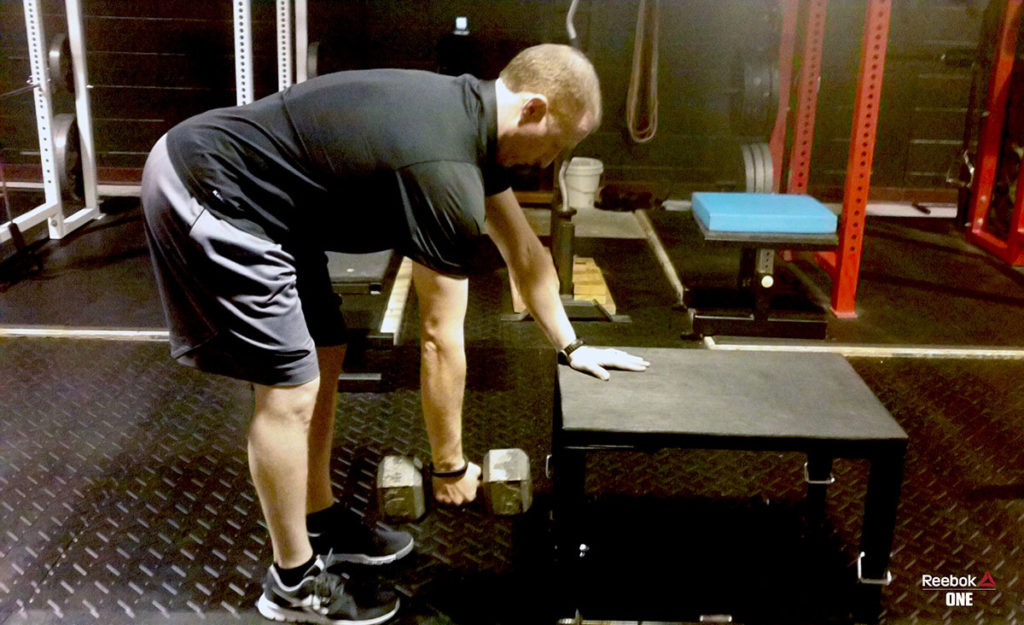
Row the Right Way
Let me tell you a little story about my good friend, J-W.
J-W and I had been friends for years, and before I opened my gym he had been following an old-school bodybuilding routine in an effort to “get swole.” This guy wasn’t a newbie by any stretch of the imagination, and he had packed on some serious size over the last couple of years. The issue was that he started having some pretty serious shoulder issues, and it was really holding back his progress.
After a quick and dirty assessment, one of J-W’s primary issues was apparent: he didn’t know how to row the right way!
If you’re reading this article, I can virtually guarantee you know a thing or two about smart strength training. But we can all use tune-ups from time-to-time, and while rowing exercises look incredibly easy at first glance, it’s also one of the exercises I find myself coaching the most in my gym. If you’re serious about getting strong and keeping your shoulders healthy to boot, let’s make sure you’re rowing the right way!
What Are You Training?
One of the most important things we need to ask ourselves when doing any exercise is: What is the goal/intent of this movement? Too often, people assume rowing is a shoulder exercise. And while that’s not entirely untrue, it’s not my focus. Instead, think of rowing as a shoulder blade exercise. Our goal is to develop the rhomboids (the muscles in between your shoulder blades).
I like to use the analogy that your shoulder blades are gliding around your rib cage. When you lower the weight, they’re gliding to the front. When you’re pulling the weight, they’re gliding back. I’m going to focus on describing the three-point dumbbell row (one hand on a bench, both feet on the floor) and the key things you need to do to have bulletproof technique.
Athletic Stance
With a dumbbell in your right hand, place your left hand on a bench. Your feet should be approximately shoulder width apart, and think about pushing back into your hips. In the starting position, your spine should be neutral from top to bottom, with your knees soft and the right arm hanging “long.”
The Support Arm
Your left arm is your support arm, and this is where a lot of little issues can come up. Most will have a tendency to get lazy, and hang on this arm. What you’ll see (if viewed from behind) is their shoulder blade hanging off, or “winging.”
To combat this, and to improve your stability, you should actively think about pushing away with your down arm. Think about getting as long as possible through that arm, and pushing your body away from the bench.
Lead With the Elbow
Now that you’re locked in with that support arm, it’s time to move that weight! The first motion should be to lead with the elbow. Too often, beginners will have a tendency to initiate the movement with their biceps via a curling motion. Keep in mind, we’re not training the arms here! Our goal is to develop the muscles of the mid-back. Initiate the movement by leading with the elbow and subtly pulling the shoulder blade back. This will get you moving in the right direction.
Squeeze Back
As you approach the midpoint, you need to think about squeezing your shoulder blade back. Too often, people assume that the further they get their elbow back, the better. Trust me, this is not the case. Pulling your shoulder excessively back behind your shoulder is a sure-fire way to end up with pain in the front of your shoulder. Instead, think about trying to actively squeeze the shoulder blade as far back as you can. If you do it right, your elbow should be just a smidge behind the midline of your body.
Get Long at the Start and Finish
Now most would assume they’re done, but if you want to row right, you want to get a full range of motion. Keep the spine in neutral, allow the shoulder blade to glide back around the rib cage, and think about getting long through both the arm and mid-back area. This pre-stretches the rhomboids for your next repetition.
Drop That Weight
Now all this sounds fine and dandy, until you go the gym and actually do it! Trust me, rowing the right way isn’t easy. I will routinely cut a client’s standard weight in half on their first training session to make sure they’re doing it right.
Don’t let ego get in the way here, your numbers will be back up in no time. And you’ll get more bang for your buck by fixing these little issues now.
Summary
I’m sure you’re wondering how my boy J-W finished up. Well, we broke this guy down, taught him how to move through his shoulder blades, and then got him brutally strong with various rowing movements. The end result? Not only was he pain-free, but the guy looked more jacked due to his improved posture as well!
Look, rowing exercises should be a staple in your training routine. Whether it’s getting stronger, leaner, or just trying to keep little shoulder issues at bay, use the tips I’ve described above to make sure you’re rowing the right way.
About the author: Mike Robertson is a ReebokONE Expert Contributor and President of Robertson Training Systems & Co-owner of Indianapolis Fitness and Sports Training (I-FAST)